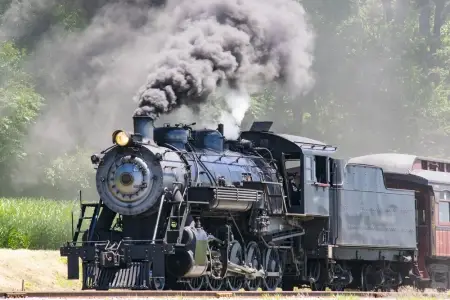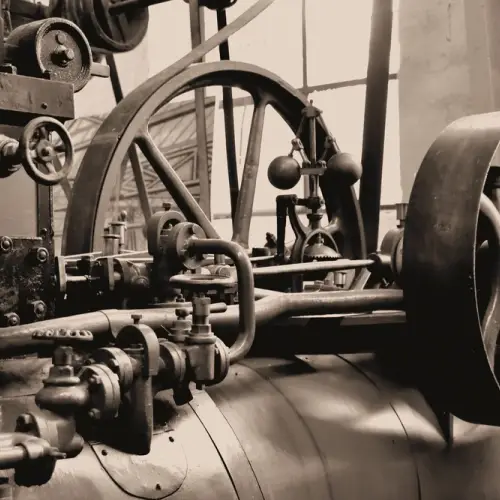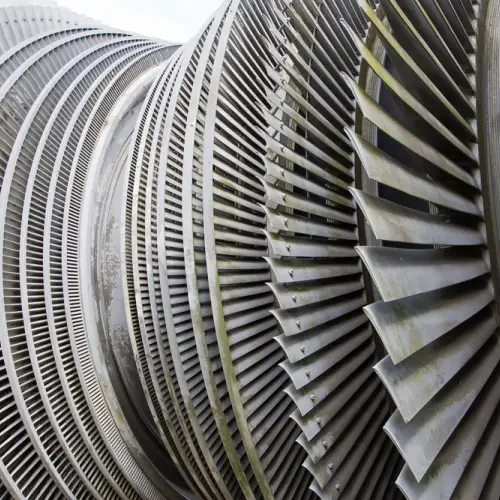
The steam engine is one of the most important inventions in human history, and its impact has been profound on many aspects of life, from industry and transportation to the generation of electricity.
Although its applications have changed and evolved over time, the influence it has had on economic, technological and social development is unquestionable. Over the centuries, the steam engine has gone from being a tool used in emerging industries to becoming a fundamental piece for the Industrial Revolution and the advancement of modern civilization.
First applications of the steam engine
The concept of the steam engine dates back to ancient times, but it was not until the 18th century that its practical development and first applications began. Initially, steam was used to move simple mechanisms and perform tasks that, until then, depended on human or animal power.
The first steam engines, such as those designed by Thomas Newcomen and later improved by James Watt, were key to transforming industry and increasing productivity.
Newcomen's engine, created in 1712, was designed to pump water from mines, a crucial task in the mining of coal and other mineral resources. This invention represented an efficient solution to one of the biggest problems of the time: the accumulation of water in mines.
However, this first version of the steam engine was limited in terms of its efficiency.
It was Watt's improvement in 1769, with the addition of a separate condenser and the ability to generate continuous rotary motion, that allowed the steam engine to be applied in a much wider range of industries.
Industrial applications of the steam engine
With the advance of the Industrial Revolution, the steam engine began to be adopted in multiple industries, where its applications were vital for development and economic growth.
Among the main industrial applications of the steam engine are:
Machinery drive
 One of the first and most important applications of the steam engine was to power industrial machinery.
One of the first and most important applications of the steam engine was to power industrial machinery.
Textile mills, for example, used steam engines to power power looms and other production equipment, allowing for greatly increased production capacity.
Instead of relying on water power, which was limited to locations near rivers or streams, factories could be located anywhere, since steam engines did not rely on a natural source of energy.
Water pumping in mines and agriculture
In addition to their initial use in mining, steam engines were also used to pump water in other applications.
In the agricultural field, these machines allowed the drainage of marshy lands, making previously unusable lands available for cultivation. This increased agricultural production and, therefore, the availability of food.
Iron and steel industry
The steam engine was also fundamental in the steel industry, where it was used to power the bellows of blast furnaces, which allowed much higher temperatures to be reached and better quality iron and steel to be produced.
This advance was key to the construction of iron and steel machines, tools and structures, essential for the development of infrastructure and new technologies.
Transport of goods
In logistics and freight transport, steam engines revolutionized distribution methods.
Before the advent of steam, transport was mainly by animal-drawn carriages or by river canals. Steam locomotives and ships made it possible to transport much heavier loads over greater distances, facilitating trade both regionally and internationally.
The steam engine in transport
One of the fields in which the steam engine had a most visible and revolutionary impact was transportation.
In the late 18th and early 19th centuries, engineers began applying steam technology to different modes of transportation, drastically transforming human and goods mobility.
Maritime transport
Maritime transport was one of the first areas where the steam engine was applied. Before its arrival, ships relied on the wind to navigate, which made travel unpredictable and slow.
With the introduction of steamships, beginning in 1807 with the Clermont , designed by Robert Fulton, maritime transport became more reliable and faster.
Steamships also enabled more regular trade routes and the establishment of transoceanic lines, which played a crucial role in the rise of global trade.
Railways
At the beginning of the 19th century, the steam engine was also applied to rail transport.
The first steam locomotives, such as George Stephenson's Rocket , developed in 1829, marked the beginning of the railway age. These machines allowed for rapid and efficient transport of people and goods over long distances.
Railway networks expanded rapidly in Europe, North America and other parts of the world, boosting trade and facilitating territorial expansion.
Ground vehicles and car experiments
Although the most successful applications of the steam engine in transportation were in ships and trains, experiments were also made with steam-powered land vehicles.
One of the first attempts was Cugnot's Fardier in 1769, a prototype steam vehicle designed by French engineer Nicolas-Joseph Cugnot.
Although these early vehicles failed to achieve widespread practical use, they did lay the groundwork for the future development of the automobile.
Electricity generation
 Over time, one of the most important applications of the steam engine was the generation of electricity.
Over time, one of the most important applications of the steam engine was the generation of electricity.
As power generation technologies evolved, the ability of steam engines to convert thermal energy into mechanical energy, and then into electrical energy, was crucial to the development of the first power plants.
In thermal power plants, the basic principle of electricity generation using steam engines is to heat water into steam. The steam generated expands and drives a turbine connected to an electric generator, allowing the production of electricity.
These plants can be powered by various sources of thermal energy, such as fossil fuels (coal, oil and natural gas), nuclear energy or solar energy in the case of solar thermal plants.
This method remains one of the most widely used ways to generate electricity worldwide. Even in the modern era, where renewable sources such as solar and wind energy are gaining ground, thermal power plants with steam turbines remain essential in the global energy infrastructure.
The steam engine in the Industrial Revolution
The steam engine is often considered the symbol of the Industrial Revolution, the period of economic and technological transformation that began in the 18th century and continued throughout the 19th century.
James Watt's invention allowed steam engines to become much more efficient, which in turn allowed their application in a much wider range of industries.
Before the Industrial Revolution, economies were heavily dependent on agriculture and manual labor. However, the introduction of the steam engine transformed production by making it possible to mechanize previously labor-intensive processes.
Factories and mines quickly adopted these technologies, leading to increased production and reduced costs.
The steam engine not only increased productivity, it also had a profound social impact.
Among other things, it allowed for urbanization, as factories required large numbers of workers, which boosted the growth of cities. It also encouraged the expansion of markets and transportation networks, which facilitated trade and communication.
Decline and legacy of the steam engine
Despite its importance, the steam engine era began to decline in the late 19th and early 20th centuries, with the advent of new technologies such as the internal combustion engine and electric motors. These systems were more efficient and compact, allowing their adoption in a wider variety of applications, from automobiles to airplanes.
Yet the legacy of the steam engine is undeniable. It ushered in a new era in which technology and industrialization transformed human life in profound and permanent ways.
Even today, although no longer used in the same way, steam engines and their principles continue to influence engineering and the way we think about energy production.